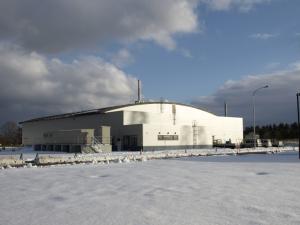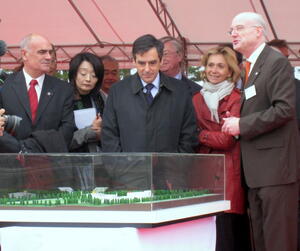Prototype time at IFMIF
In deuterium-tritium (DT) fusion, the plasma-facing components of the installation are submitted to an intense flux of highly energetic neutrons. Their repeated impact activates the materials, alters their microstructures and modifies their properties.
It is therefore of crucial importance to develop and characterize materials that will withstand these aggressions and mitigate their effects—not so much for ITER, which will operate on a "pulse mode," but certainly for DEMO, PROTO(1) and the industrial fusion power plants that will follow.
IFMIF, the International Fusion Materials Irradiation Facility, will do just that. A part of the Broader Approach that Japan and the European Union formally launched in 2007, the project has been in the Engineering Validation and Engineering Design Activities (EVEDA) phase for the past two years—a phase similar to the ITER Engineering Design Activity (EDA) of 1992-2001.
At Rokkasho, the IFMIF team is busy coordinating the detailed design activities that take place in many European and Japanese institutes. Staff is small—some 20 people, soon 40—seconded by Japanese, French, Italian, German and Spanish institutions.
In IFMIF/EVEDA, like in the ITER EDA fifteen years ago, prototypes are being developed. "We have to validate two very innovative technologies," says IFMIF Project Leader Pascal Garin. "One is an accelerator prototype whose characteristics are well beyond the present state of the art; the other is a lithium test loop to check all thermo-hydraulic characteristics of this very innovative system."
The IFMIF accelerator—a parallel pair actually—will deliver 40 MeV deuterium nuclei which, by interacting with a fast-flowing film of liquid lithium, will generate neutrons of the required energy. These neutrons will in turn impact small samples of materials, thus reproducing what occurs in an operating fusion reactor. "The flux rate will be slightly above that of a reactor. In six years irradiation we create a degradation equivalent to about ten years of continuous exploitation."
The prototype for the accelerator is being manufactured mainly by Europe, essentially through in-kind procurements. In Rokkasho, JAEA has already delivered the 2,000 m² building that will host the installation. The accelerator's "injector" will be tested next year at CEA-Saclay. "We will start receiving the components by late 2011," says Pascal Garin, "and experiments will last for three years."
As for the lithium loop, it will be installed in a dedicated facility at Oarai, not far from Naka, where JAEA has developed operational and handling skills for liquid metals such as sodium.
"Four or five years from now," concludes IFMIF's Project Leader, "the IFMIF Engineering Design Report, the equivalent of the 2001 ITER Final Design Report, will be delivered. I hope that the process of deciding on a site for IFMIF will be launched before, in order to ensure some continuity between the current EVEDA phase and the construction phase."
(1) PROTO is the pre-industrial prototype that would follow DEMO.
This article is part of a three-part series providing an update of the Broader Approach activities.
For more background information on the Broader Approach click here.



